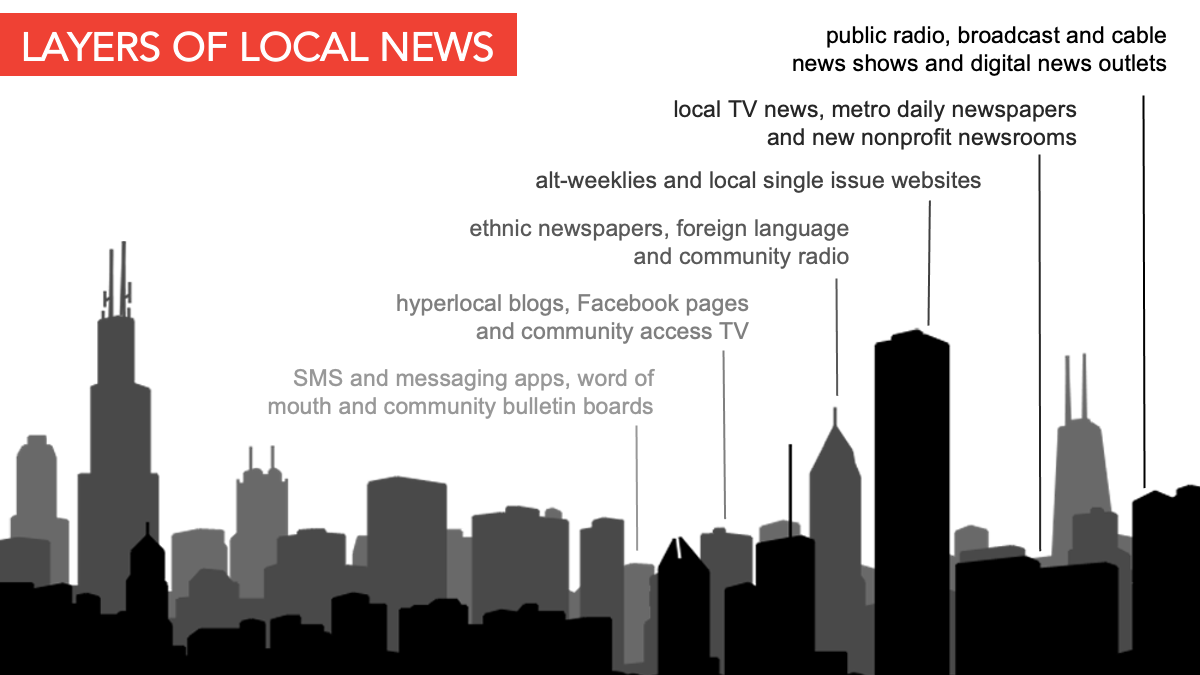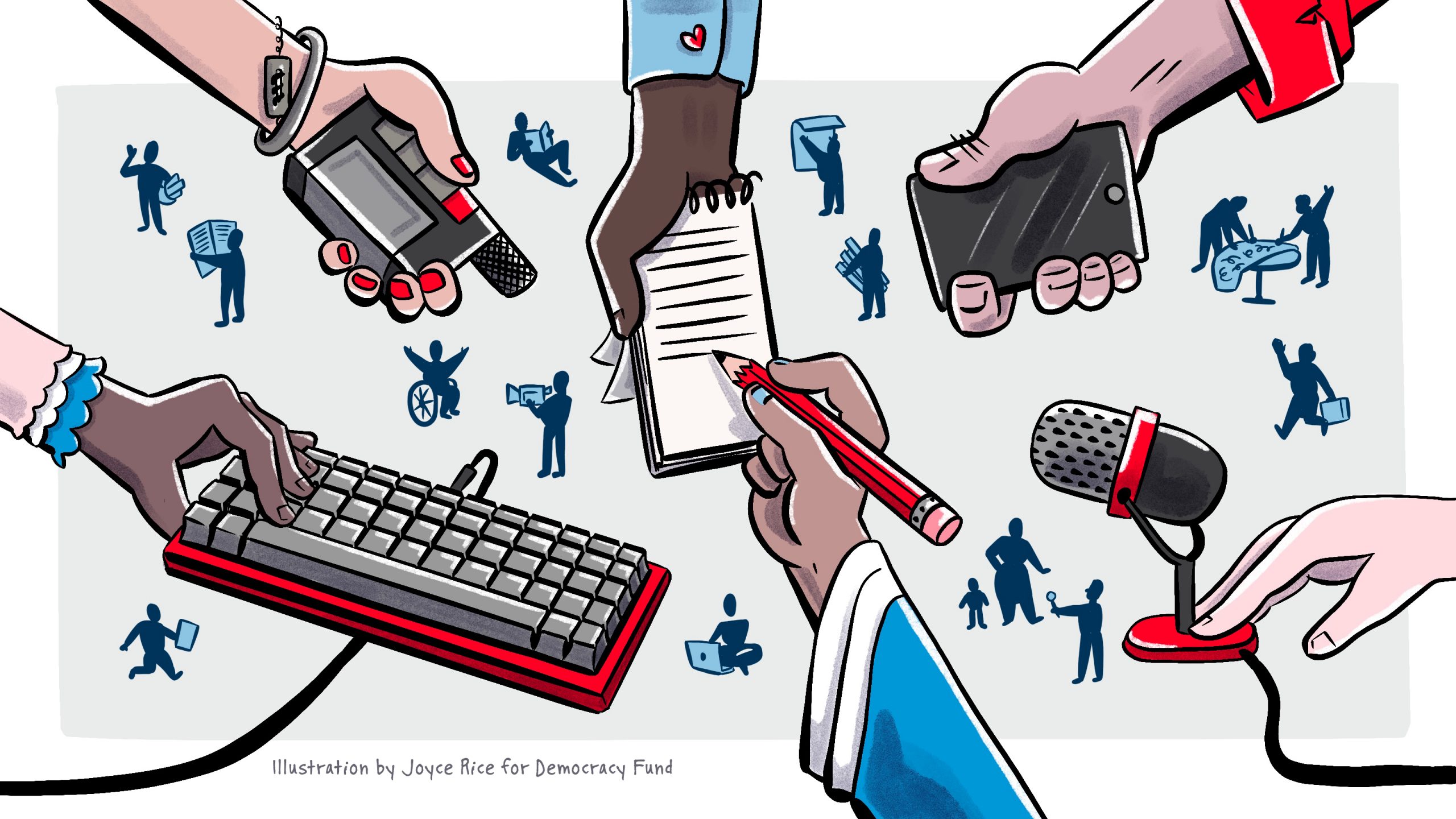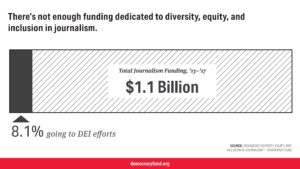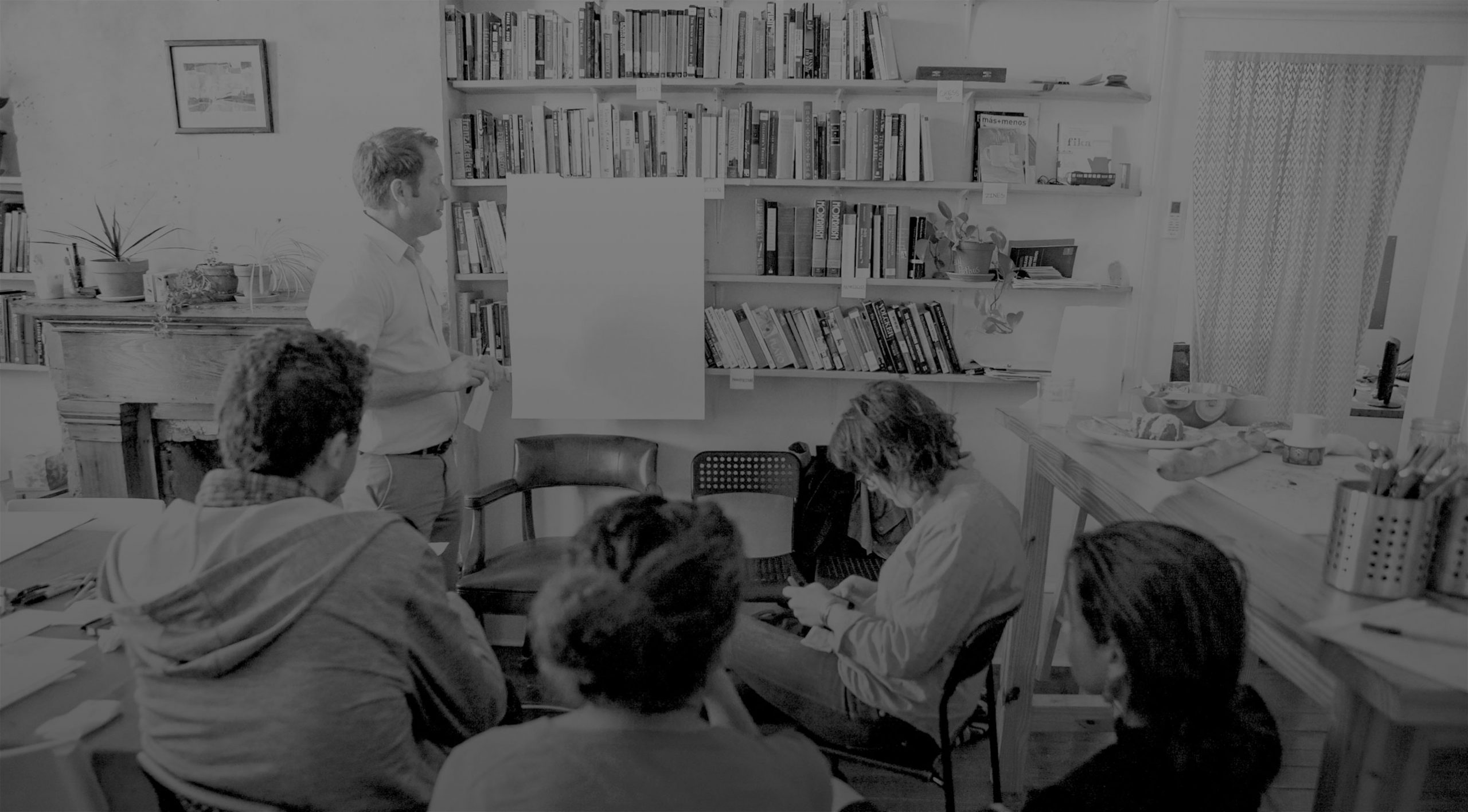As part of our series of conversations with equity in journalism leaders to see how they are adapting in light of the current pandemic, I recently chatted with Jodi Rave, executive director of the Indigenous Media Freedom Alliance (IMFA), a nonprofit media organization that aims to fill information gaps for American Indian communities in the Great Plains. Democracy Fund proudly supports IMFA’s publishing arm, Buffalo’s Fire through the Racial Equity in Journalism Fund.
In 2018, Democracy Fund published American Indian Media Today, a report authored by Rave that took a deep dive into the history and current state of Native media in the United States. The report describes how press freedom is a key challenge, with tribal governments controlling an estimated 72 percent of tribal newspapers and radio stations. This means that tribal press “largely promote the tribe’s messages rather than serving a watchdog role that holds tribal governments accountable to the community.”
Below is a lightly edited recap of our conversation.
LT: For most of the world, we are living in unprecedented times. What is the role of media in a moment like this, specifically community media?
JR: Media operations across the country are playing a critical role in delivering news to their communities. Local journalists know their communities better than those who parachute into our homelands, and they’re doing important work to help community members navigate this pandemic. The Navajo Times, for example, has done an excellent job in delivering up-to-date news to Navajo citizens, the hardest hit American Indian community in the country.
Local journalists know their communities better than those who parachute into our homelands, and they’re doing important work to help community members navigate this pandemic.
For nearly four years, the president of the United States has criticized the national media. I think this has had a trickle-down effect for all media. It’s a bit more difficult to advocate for press freedom in tribal communities when anyone watching the evening news or reading Twitter hears a continual lambasting of media. That said, a global health pandemic has allowed all media, including community news organizations, to shine.
LT: How are you staying connected with your communities, and what are you hearing from them about their information needs?
JR: We are using Zoom, drones, the phone, and Marco Polo to stay connected with community members. We have two types of media on the Fort Berthold Reservation here in North Dakota. The Mandan, Hidatsa and Arikara Nation owns and controls the tribal radio and newspaper. My organization, the Indigenous Media Freedom Alliance and our publishing arm, Buffalo’s Fire, are independent and nonprofit. We have never asked the Mandan, Hidatsa and Arikara Nation for money.
In a recent interview, Mandan, Hidatsa and Arikara Nation CEO Scott Satermo told Buffalo’s Fire that the tribe created a COVID-19 Task Force at a time when the state and counties were still slow to react. Like the rest of the country, it’s still difficult for the tribe to test for the virus, but Satermo credited his team for setting up shelters for those who tested positive and want to quarantine away from their family. Satermo said he’s proud of the work that’s been done, but much seems to be lost on tribal citizens who go to the tribe’s Facebook page or the tribal newspaper.
Some have pointed out that the information isn’t always the most up to date, and that the online updates haven’t been consistently published in the tribal newspaper, which is where a lot of people go for their news.
LT: Have you been able to pivot your operations to reflect some of those needs?
JR: In the past, Buffalo’s Fire has printed stories that will never appear in the local tribe-owned newspaper. Through spiritual leaders locally and across Indian Country, we know we have to shift our message beyond the basics of social distancing, where to get tested and making sure we wash our hands. It’s predicted a second-wave of coronavirus will sweep through our lands, locally and nationally. It’s important to hear from our American Indian spiritual leaders at this time, so we are changing course and reaching out to them — from New York to North Dakota — for words of encouragement and enlightenment.
LT: We know COVID-19 has created economic challenges for many industries, including journalism. What do outlets need, especially ones serving historically marginalized communities, to weather this storm and continue serving their audiences?
JR: COVID-19 continues to take a toll on communities across the country. News organizations across the country have reported heavily on hotspots. We have learned that an overwhelming number of those hotspots are in communities of color. The third hardest-hit metro area in the United States to be ravaged by coronavirus is Gallup, N.M., a city bordering the Navajo Reservation, a popular hub close to Navajo Nation tribal headquarters. Independent American Indian media organizations and newsrooms of color need general operating funds to operate at full capacity, because there will be more reporting that needs to be done when the second wave hits.
Independent American Indian media organizations and newsrooms of color need general operating funds to operate at full capacity, because there will be more reporting that needs to be done when the second wave hits.
Our American Indian communities are historically marginalized. We typically experience hardships, such as poor housing, inadequate health care systems, high unemployment and high rates of diseases like diabetes. All these issues make us highly susceptible to testing positive. Our newsrooms should be reporting on these local issues, rather than having to wait for the mainstream press to show up in crisis mode.
Our newsrooms should be reporting on these local issues, rather than having to wait for the mainstream press to show up in crisis mode.
LT: Has this moment brought anything new to light for you around media equity? If so, what?
JR: For me, media equity means we need to do more to support independent tribal media outlets to better serve our rural and urban American Indian communities. I’ve seen COVID-19 news move slowly through tribe-managed filters. Greater independence to gather and track that news for independent media means a lot of work needs to be done to create channels for freedom of information, such as the enactment of independent press ordinances. Right now, only a handful of tribes have free press ordinances.
For me, media equity means we need to do more to support independent tribal media outlets to better serve our rural and urban American Indian communities.
LT: Where is one place that you’re finding inspiration for your work right now?
JR: I am finding inspiration from spiritual leaders of different tribes. They are a grounding force in a time when a lot of social media and mainstream media information on the global pandemic is centered in fear. This is a time to be careful, not fearful. As for media inspiration, I admire the work of the Navajo Times, a newspaper — once controlled by the tribe — that has put up a good fight through the decades to operate independently of the Navajo Nation.









